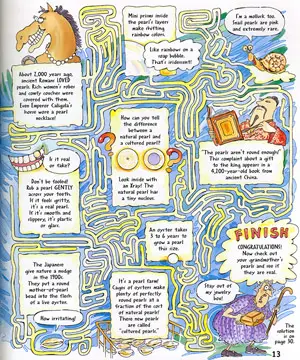Book Review: Hidden Treasure
Readers of this great little book will have a fun time discovering archaeology while learning more about some of history's most famous treasure finds. Deceptively simple in its layout, Hidden Treasure, by noted children's author and explorer Tina Holdcroft, nonetheless contains a host of historical nuggets and fun asides that add up to one great experience. Mining sources as diverse as a viking shipwreck and a junkyard, Holdcroft challenges the reader to read the fine print, not only in her book but also in history and archaeological reports, looking for clues to the identity of artifacts and their owners. These skills come in handy in the study of social studies and other subjects, as well as in life in general. The book, published by Annick Press, starts, naturally, with the discovery of King Tut's Tomb, a favorite of kids and adults alike. The illustrations, also done by Holdcroft, serve to illuminate the purpose of the book: imparting information in a fun and exciting way. Time and again, clues to the significance of details and objects are contained in the illustrations, making them as well an attractive source of information for the reading detective. Fun nuggets found in the illustrations include a mention of the Danelaw, one of the most significant property arrangements in the history of Western civilization. Curious readers can, of course, look in an encyclopedia or type the word into an online search engine. The book's subtitle, "Amazing Stories of Discovery," lends itself to formatting as well, as the pages describing the discovery of a rare pearl is told via illustrated snippets that populate a two-page maze, complete with deceptive pathways for the pencil/pen to navigate.
Another fun device is the use of the story of Heinrich Schliemann's discovery of Troy as the pieces on a gameboard, which is created on another two-page spread. Participants learn history and archaeology as they roll dice and move their gamepieces around the board. And don't miss the fun "find the rats" game on the aforementioned Junkyard Treasure pages. Everlasting kudos to Holdcroft as well for including the Oak Island "Money Pit," which was first discovered in 1795 and continues to confound treasure-seekers to this day. The author expertly includes sources of more information to further the study begun in the book. All in all, this is an excellent source of historical and archaeological information and a wonderful way to introduce students to both subjects. |
|
Social Studies for Kids
copyright 2002–2026
David White






